Another term for Epsom salt is magnesium sulfate, a mineral compound that gardeners often use to optimize the health and productivity of plants. This article focuses on how Epsom salt can be applied to tomato plants, giving an in-depth analysis of advantages, ways of using it, and ultimate results. Once gardeners understand how magnesium and sulfur contribute to the development of tomato plants, they will be able to select correct decisions for improving soil quality, enhancing nutrient uptake and increasing yield and taste. This guide intends to make novice and experienced gardeners knowledgeable enough so that they could succeed in integrating Epsom salts into their cultivation endeavors.
Understanding Epsom Salt and Its Benefits for Tomatoes
Epsom salt provides tomatoes with two essential nutrients: magnesium and sulfur.Magnesium is important for photosynthesis as it constitutes the central atom of the chlorophyll molecule that improves the ability of plants to convert energy from sunlight. Sulphur helps synthesize amino acids, proteins and enzymes responsible for growth and development of plants. Magnesium also helps activate DNA and RNA synthesizing enzymes, promoting healthy cell division and growth. Regularly applying Epsom salts can help address magnesium deficiencies usually characterized by yellowing leaves with green veins, thus improving overall plant vigor and fruit production. Using Epsom salts can, therefore, result in healthy tomato plants, which are more productive.
Composition and Chemical Structure of Epsom Salt
The chemical name for Epsom salt is magnesium sulfate heptahydrate (MgSO4·7H2O). It consists of magnesium, sulfur, and oxygen. The molecular weight is 246.47 g/mol MgSO4·7H2O crystallizes orthorhombically that allows it to dissolve easily in water, making the main nutrients available to plants. Magnesium ions (Mg2+) act as cofactors in various enzymatic reactions whereas sulfate ions (SO4^2-) are important for synthesis of sulfur-containing amino acids such as cysteine and methionine. The solubility of Epsom salt at 20°C is approximately 71 g/100 mL, implying its high solubility, hence its effectiveness in foliar sprays or soil applications. By understanding these specific chemical properties, tomato growers will be able to supplement their tomato plants with appropriate nutrients accurately.
Essential Nutrients Offered by Epsom Salts
Epsom salts provide several essential elements required for proper plant growth, particularly focusing on two minerals: magnesium and sulfur.Magnesium is vital to keep photosynthesis running because it acts as one building block of the chlorophyll molecule which aids in efficient conversion of light energy to chemical energy. It also helps in mobility of other nutrients like phosphorus and nitrogen which are important for proper plant growth. Sulfur is essential as it is a major constituent of cysteine and methionine two vital amino acids in protein synthesis and enzyme activities. Also, sulphur is required to aid in the formation of vitamins that help plants remain strong while growing.
Historical Use and Effectiveness in Agriculture
Farmers have used Epsom salts for many years due to their ability to correct magnesium deficiency. Crop production records from ancient agricultural texts indicate their use in various crops, such as tomatoes, peppers, and roses, which love magnesium. The application of Epsom salt dates back to the 17th century, when farmers discovered its beneficial effects on soil fertility.
There are several technical parameters justifying the effectiveness of Epsom salt in agriculture.Firstly, its solubility in water enhances easy absorption by plant roots especially when applied as a foliar spray at 1-2 tablespoons per gallon of water. There are claims that a foliar application can increase chlorophyll content leading to higher photosynthetic rates. Additionally, the ideal pH range for applying Epsom salts is between 6.0 and 7.5 although most crop soils require this level hence ensuring maximum nutrient availability. This has been supported by field studies indicating improved structural health and increased yield upon incorporation of Epsom salts into soils.
Preparing Soil with Epsom Salt for Tomatoes
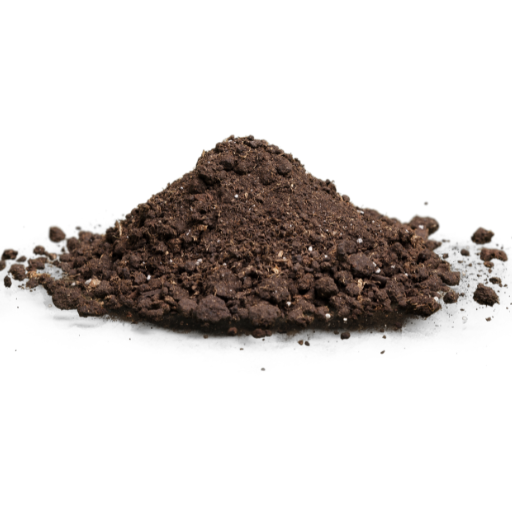
Epsom salt should be added to the soil in order to grow tomatoes; one way of doing it is by testing the ground for magnesium levels. In case of low magnesium content, one tablespoon of Epsom salt should be mixed with top 6 inches of the soil prior planting. Additionally, during growing seasons, foliar spray with Epsom salt that needs attention all the time will need application at a rate of mixing one tablespoon in a gallon of water and spraying on the leaves directly. Moreover, if Epsom salt is applied as a side-dressing onto plants at 1 tablespoon per foot plant height, it could guarantee continued availability nutrients especially when these crops are already in fruiting phases. By doing so, the technique not only contributes to better plant growth but also helps in improving chlorophyll production which promotes nutrient absorption.
Soil Testing and Analysis Before Application
Soil analysis and testing are very important steps to take before applying any Epson salts on it so as to know its particular nutrient make up pH level. To assess accurately magnesium level in your soil, test samples from different parts of your garden should be collected and sent for analysis by a reputable lab. The results from this laboratory will show if there was absence of magnesium or if an addition through Epson salt can be made. On the other hand, such tests give a comprehensive breakdown about other crucial elements contained within it hence making it easier for you to tailor fertilization strategies appropriately. A good farmer therefore has no option but conduct routine soil testing at least once every year while taking into account that some adjustments may be required within his farm area hence ensuring that his vines have best growing condition available.
Proper Mixing Techniques for Soil Amendment
To achieve even distribution and increase efficiency after adding materials to the soil, one must adhere to proper mixing techniques for soil amendment, which comprises several stages. At first, dig out loose earth using either a garden fork or tiller down six to eight inches. This is important as it enables the soil to be aerated and open up for the entire amendment to mix well with it.
With organic matter like compost or Epsom salt, blend it uniformly using a one-to-one ratio for compost and about one tablespoon of Epsom salt per gallon of water when spraying on leaves. The mixture should then be gently but thoroughly integrated into the soil. Better uniform mixing can also be achieved in larger areas by employing a rotary tiller.
Also, slightly wetting your soil before and after adding amendments will allow for better intake and blending. Keeping your land lightly moist (but not soaked) enables these supplements become active, besides they will remain on the ground instead of disappearing with wind. If you want an equal nutrient profile that is just right for plant growth, three steps should be followed accordingly.
Incorporating Epsom Salt in Planting Holes
When adding Epsom salt to planting holes, you need to be precise so that the plants can benefit from it maximally. Generally, adding approximately one tablespoon of Epsom salt into the hole for each plant is advisable. This amount gives an initial dose of magnesium and sulfur, two nutrients necessary for chlorophyll production and general plant health. After putting the Epsom salt at the bottom of the hole, lightly mix it with the soil around before setting your plant. In this way their roots will quickly be able to find food as they are just about establishing themselves. To further help grow plants you may also dilute Epsom salts in water and apply occasionally through watering during growing season.
Applying Epsom Salt via Foliar Spray
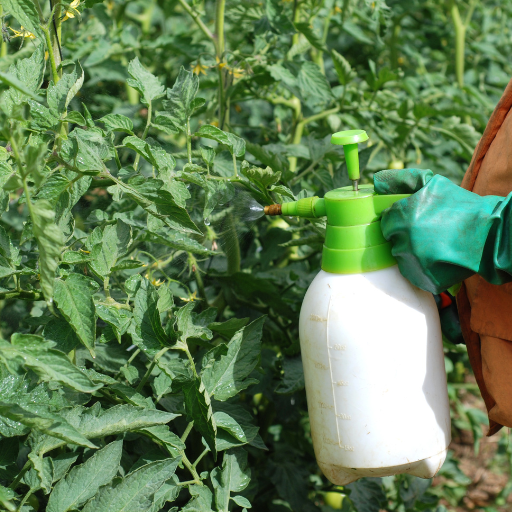
When used for foliar applications, an Epsom salt spray is very effective and useful because it supplies food to the leaves of plants quickly. Dissolve one tablespoon of Epsom salt in a gallon of water and blend well. It should be sprayed in early morning or late afternoon when the risk of leaf burn due to direct sun exposure is minimized. Use a garden sprayer or spray bottle to evenly apply this mixture over the foliage to cover both upper and lower surface leaves, thus ensuring complete nutrient absorption. To correct magnesium deficiencies and encourage lush green growth, apply consistently every two-four weeks.
Advantages of Leaf Applied Epsom Salt on Tomato Plants
Foliar application of Epsom salt on tomato plants has various technical benefits which simplify nutritional intake improving general plant health. First, when applied directly onto the leaves as Magnesium sulfate uptake becomes faster especially during times when nutrients are scarce. This helps improve chlorophyll production necessary for photosynthesis hence more energy will be derived from sunlight thereby supporting healthier growth patterns among our tomatoes’ crop plants that can have better commercial yields (Buchanan et al., 2000). Additionally, spraying leaves can reduce blossom-end rot caused by magnesium deficiency in tomatoes by providing nutrients exactly when they are required.
Furthermore, soil pH problems can be mitigated through foliar application. Since these sprays do not involve soil for root absorption like in case with use of Epsom salts foliar sprays, limiting availability due to pH factors does not occur herein (Buchanan et al., 2000). One tablespoon per gallon dose rate reputable horticulture sources have recommended every fortnight; this can make leaf colors look better with fruits setting right as plants appear strong (Vose & Biernbaum, 2014). Suffusing the top and bottom sides of both leaf surfaces enhances nutrient efficiency resulting in improved overall coverage for maximum absorption. To optimize the health and productivity of tomato plants, foliar spraying with Epsom salts can be viewed as a highly precise way.
Proper Dilution Rates and Application Interval
Dilution rate and frequency of use are important factors to consider for effective foliar application of Epsom salt on tomato plants. According to research from top horticultural sources, one tablespoon of Epsom salt per gallon of water is the best concentration for foliar spray. This ratio ensures that essential magnesium and sulfur are delivered in the right amounts without burning leaves or harming them.
How often it should be applied depends on the plant’s stage of development and symptoms associated with nutrient deficiency which appear in two forms: bi-weekly or monthly (Vose & Biernbaum, 2014). The first can occur when rapid growth or magnesium deficit shows some symptoms such as yellowing leaves. However, monthly supplementation shall suffice during periods of stable plant growth.
Several technical parameters underlie these guidelines. Epsom salt contains certain micronutrients including; 10% approximately magnesium while sulfur constitutes about 13% in weight basis (Buchanan et al., 2000). These levels should be maintained by following recommended rates as well as applying at regular intervals so that they can help satisfy this demand by being absorbed rapidly into plants where they can be utilized. Also through ensuring even distribution occurs by wetting both upper and lower sides evenly throughout this spray product helps control nutrient imbalances making for uniform growth patterns across an entire production area
Best Practices for Foliar Spray Techniques
Several best practices must be followed when implementing foliar spray techniques to get the best results. First, spraying should be done early in the morning or late in the evening when temperatures are low and humidity is high. This helps reduce leaf burn risk and maximize nutrient uptake because stomata (small openings on the leaf surface) tend to be open during these times.
Secondly, ensure that the spray solution is applied uniformly, covering both the upper and lower surfaces of leaves. A fine mist sprayer can help achieve this even distribution. Proper coverage is necessary to avoid localized deficiencies and promote uniform growth throughout the entire plant.
Additionally, it’s important to monitor the pH level of a spray solution closely. A slightly acidic solution with an approximate pH of 6.0–6.5 might be considered an ideal pH value for nutrient absorption purposes. Adjusting pH can also involve using readily available buffers if necessary.
The technical parameters of equipments used also play a critical role. Sprayers with adjustable nozzles and pressure settings allow precise control over application rates and droplet sizes thus ensuring effective and efficient foliar spray application.
Lastly, calibration of the spray equipment is vital to maintain accuracy in application rates which prevent dilution ratios from varying widely thus avoiding nutritional over/under doses therefore preserving tomato health and productivity levels
Epsom Salt Application During Different Growth Stages
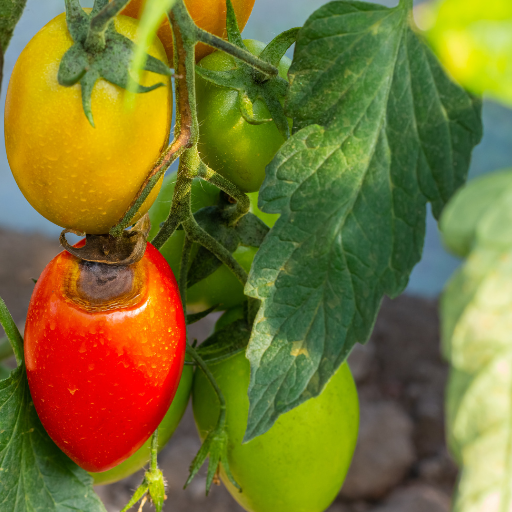
The Epsom salt, made up of magnesium sulfate mainly, is useful to tomato plants at various growth stages. Using diluted Epsom salt solution during the seedling stage could help develop strong root system and increase their growth rate. Adding this solution into the soil or as a foliar spray is important for supplying essential magnesium necessary for photosynthesis and general plant health.
During flowering, magnesium in tomatoes supports blossom formation and ensures that calcium uptake is effective, thereby preventing problems like blossom end rot. Applying a weekly foliar spray by dissolving Epsom salt in water enhances flower development and fruit set.
In the fruiting stage, maintaining adequate magnesium levels facilitates proper filling and ripening of fruits. Regularly side-dressing with Epsom salt or applying it as a foliar spray during this period increases fruit quality and yield. Soil testing should be considered to determine accurate magnesium requirements and adjust applications accordingly for optimum outcomes.
Early Growth Phase: Seedling and Transplant Care
In the early growth phase, good seedling care and transplanting are crucial to developing healthy tomato plants. Starting off, sterile, well-drained potting mix should be used when growing the seedlings, with a soil pH ideally between 6.0 and 6.8 for best nutrient utilization. The soil needs to be kept moist, not wet; otherwise, an excess of moisture causes root rot or damping-off disease.
Seedlings are transplanted after they produce two real leaf sets. It is advisable to harden off the seedlings before transplanting them by gradually exposing them outdoors for 7-10 days.This process allows the plants to adapt to differences in temperature, wind, and sunlight, resulting in less shock while encouraging vigorous growth.
Transplanting should be carried out on well-drained sites with soil that contains organic matter and has temperatures above 55°F (13°C). When planting them in the ground, it is advisable to plant deeper than they were planted in their pots and cover the stem up to the first set of leaves for more root development. Spacing each plant about 18-24 inches apart in rows 36-48 inches apart will allow adequate airflow and reduce disease risk.
After transplanting, maintaining even moisture levels and using a balanced starter fertilizer (for example, a half-strength dilution of 10-10-10 NPK) will help nitrogen, phosphorus, and potassium uptake, which is important for early growth spurts. Monitoring soil moisture levels by assuring at least 1-1.5 inches of water per week, either from rainfall or supplemental irrigation, will support the plants’ needs.
Mid-Season Application: Flowering and Fruit Development
During mid-season when plants are at flowering stage and fruit formation stages, there is need for proper nutrition to support their growth and productivity. During this phase switching to a higher phosphorus and potassium fertilizer (e.g., 5-10-10 NPK formulation) can enhance flowering processes as well as fruit set. Phosphorous is vital for energy transfer while nucleic acid formation whereas Potassium helps in protein synthesis and overall plant vigor.
Also, crops should be regularly inspected for pests or diseases. For instance, if not addressed on time, problems like aphids, spider mites, or fungal infections can hinder development. Whenever such cases arise, integrated pest management (IPM) techniques like the introduction of beneficial insects together with the application of biofungicides ensure that environmental health remains safe.
Ensuring a constant supply of water in the soil is very important; soil moisture will be retained, temperatures regulated and weed growth suppressed. It also helps to prevent stress and ensures continuous flowering and fruiting by watering plants with about 1-1.5 inches per week or so. This can also improve air circulation, manage plant structure, reduce limb breakage and promote healthy fruit development.
Lastly, regular pruning for removing suckers and lower leaves that may be in contact with the soil redirects energy to fruit production hence minimizing disease risk. By adhering to these guidelines, an individual would guarantee abundant fruits all through the growing season.
Late-Season Boost: Enhancing Ripening and Yield
Several key factors contribute to enhanced late-season ripening and yield. First, optimizing nutrient supply is crucial. For instance, applying fertilizers with a balanced NPK ratio such as 8-8-8 or formulations higher in potassium at this stage could have some advantages. Potassium makes fruits bigger with better color and sweetness as well as boosts immunity against plant diseases. In terms of black plastic mulch row covers or other frost protection methods can be used to keep optimal conditions where below 55°F night temperatures might hinder ripening; it can even lead to higher root zone temperatures during ripening processes.
Water management must also be fine-tuned. During the latter stages of fruit maturity, reducing water slightly will cause sugars to concentrate, thereby improving the flavor and quality of fruit; still, however, one needs to avoid severe drought stress, which causes a decline in the health status of plants, leading to reduced yields.
Additionally, ensuring proper airflow around the plants keeps them dry, which reduces the chances of fungal diseases attacking them. Properly spacing plants in green house setups, using fans, or employing trellising systems that lift foliage off the ground are some highly practicable techniques here. With these strategies implemented over this growing season’s end period, improved ripening and maximized yields are realized.
Monitoring and Adjusting Epsom Salt Use
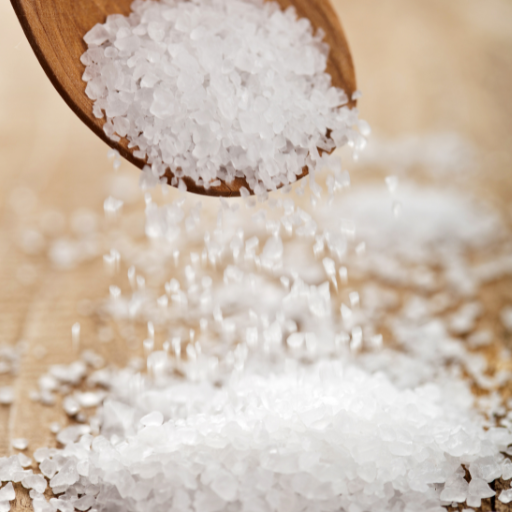
To check the use of Epsom salt is important in ensuring perfect plant health. A soil test should be conducted as a first step to establish magnesium levels and its basic requirements. Essential things to monitor for include; yellowing leaves, stunted growth and low yield which are all signs of lack of enough amounts of magnesium in the plants. Fertilizer applications must then be adjusted based on these observations as well as soil tests results. This can typically be achieved by starting with 1 tablespoonful of Epsom salts solution per gallon of water applied as a spray at the leaf level every two weeks henceforth. Regular checks and adaptation are extremely important to avoid overuse that might lead to nutrient imbalances and eventual toxicity.
Signs Indicating Magnesium Deficiency in Tomato Plants
Some common symptoms that indicate magnesium deficiency in tomato plants are interveinal chlorosis, especially where leaf tissue turns yellow while veins remain green, mainly on older leaves. This happens because magnesium is mobile within plant tissues; thus, it’s moved from old leaves to new ones under inadequacy conditions. Also, it may cause upward curling or stiff texture, leading to necrotic spots in severe cases. It is necessary to correctly detect these symptoms since they resemble deficiencies relating to other nutrients like iron or manganese.
Calcined dolomite is one such amendment that supplies both calcium and magnesium when incorporated into the soil (Sato et al., 2013). Magnesium sulfate heptahydrate (Epsom salt) readily dissolves in water forming a clear solution that contains no suspended impurities (Lindsay & Norvell 1978). The shortcomings related with this method include: first, soil testing alone is not sufficient unless accompanied by proper management practices aimed at correcting fertility problems observed; secondly, there may be instances where soils have an abundance in available nutrients but still express nutritional disorders due to physiological limitations; thirdly, the method is based on nutrient removal data that may not be specific to the crop in question. Using dolomitic lime as a soil amendment has several advantages over other magnesium sources. This will help reduce nutrient imbalances in plants.
Response of Plants to Epsom Salt Application
Observing tomato plants reveals physiological changes that suggest their response to Epsom salt (magnesium sulfate) application. When correctly applied as a supplement for magnesium deficiency, it can make a huge difference. Improvement in leaf color, for example, is usually noticeable within one or two weeks after application; regions with yellowed interveins often return to green and get healthier overall plant energy.
However, it’s worth following specified technical parameters when using Epsom salt for best results. The common practice here is dissolving 1-2 tablespoonfuls of Epsom salts into each gallon of water and using this mixture as a foliar spray after every fortnight. Therefore, one has to keep an eye on the growth behavior of such plants and also check out if they have enough magnesium content in their soils. Through these observations, one can come up with appropriate adjustments to make on mineral fertilizers used. Furthermore, soil pH levels should be maintained within 6.0 to 6.5 so as to favor uptake of Mg by the plant roots.
Some improvements were seen in yields and quality of tomatoes grown when epsoms salts was used in some trials (Dutcher et al., 1964). Magnesium should also be supplied at recommended rates together with other essential nutrients like nitrogen or even calcium since high amounts might result to antagonistic effects which inhibit calcium intake (Hanson & Jones 2001). Consequently, this calls for constant soil testing and general nutrient management strategies aimed at keeping an optimal growing environment all round time
Soil pH Balance and Nutrient Uptake Considerations
Keeping the soil pH appropriate is crucial for proper uptake of nutrients by plants. The soil pH impacts the availability of essential nutrients; for instance, in acidic soils (pH<6.0), micronutrients like iron and manganese are more soluble, reaching toxic levels and macro-nutrient availability like calcium and phosphorous decrease. Conversely, alkaline soils (pH>7.0) reduce the availability of iron, manganese and phosphorus. Most plants including tomatoes prefer slightly acidic to neutral soils with a pH range between 6.0 to 7.0 being the ideal one. Regular soil testing is important to monitor and adjust the pH levels. Common materials used for increasing soil pH include lime (calcium carbonate), while sulfur or aluminum sulfate can be used to lower the same.. It is important to ensure that there is a proper balance of PH in order to optimize nutrient uptake reducing deficiencies that may affect plant health thus enhancing productivity
Environmental and Sustainability Factors
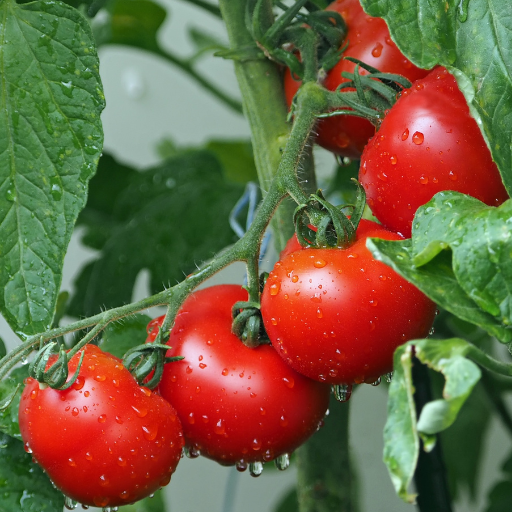
Modern agricultural practices are influenced by environmental and sustainability factors. In order to reduce environmental impact and boost soil health, there is a need for sustainable farming approaches such as crop rotation, cover cropping and integrated pest management which encourage biodiversity, improve soil health and minimize reliance on chemical inputs. To ensure water use efficiency and conservation, it is important to apply strategies of drip irrigation or rainwater harvesting among others in water management. Agroforestry and organic farming techniques also help mitigate climate change through carbon sequestration. Sustainable practices that provide long-term support for agricultural productivity while preserving the overall welfare of the ecosystem.
Impact on Soil Health and Microbial Activity
When considering sustainable agriculture, healthy soil must be regarded as the basis; this means both soil health (its bio-physico-chemical indices) and microbial activity have paramount significance in it. Plant growth depends largely on soil fertility that is defined by its physical condition, chemical composition as well as biological matter. High levels of organic matter present in soils coupled with balanced nutrients set up healthy conditions for plants whereas good structure allows for adequate aeration and moisture storage. Besides building up favorable conditions in soils to sustain plant development; proper integration methods should promote the presence of beneficial microbes which include bacteria fungi actinomyces.
Sustainable Practices in Tomato Plant Care
Several sustainable practices can be applied in tomato plant care, which promote growth and reducing damage to the environment. One practice involves changing crops annually so that some plants restore soil while others control pests/diseases affecting tomatoes only. Organic mulching materials like straw/green grass clippings help keep weeds from growing since they conserve moisture content in the field, maintaining minimal temperature fluctuations within it (CFIA 2009). Incorporating compost or organic fertilizers improves soil fertility and structure, ensuring that the plants receive adequate nutrients. Integrated pest management (IPM) techniques involving the use of beneficial insects and natural enemies can reduce chemical pesticides. Proper watering practices such as the sprinkling method enhance the efficient utilization of water during irrigation and keep leaves dry, thus preventing diseases. The above methods contribute to healthier tomato plants hence a more sustainable agriculture system.
Frequently Asked Questions (FAQs)
Q: How can I use Epsom salt for tomato plants?
A: To use Epsom salt for tomato plants, dissolve two tablespoons of Epsom salt per gallon of water and use it to water your plants every two weeks. This helps supply magnesium which tomatoes need for healthy growth.
Q: Why do tomato plants need Epsom salt?
A: Tomato plants need Epsom salt because it provides magnesium, which is essential for chlorophyll production and effective photosynthesis. Magnesium helps the plants produce fruit and grow larger, healthier leaves.
Q: How much Epsom salt should I use per tomato plant?
A: You should use about two tablespoons of Epsom salt per plant when adding it directly to the soil. This can help with both growth and preventing blossom end rot.
Q: Can Epsom salt be used for other vegetable plants?
A: Yes, Epsom salt can be used for vegetable plants like tomatoes and peppers. It provides the necessary magnesium that helps with nutrient absorption and overall plant health.
Q: When should I add Epsom salt to my vegetable garden?
A: You can add Epsom salt to your vegetable garden at planting and as a periodic treatment throughout the growth season. For best results, adding Epsom salt once a month can ensure your plants receive continuous magnesium supplementation.
Q: Are there any specific guidelines for using Epsom salt in a vertical tier system?
A: When using Epsom salt in a vertical tier system, you should evenly distribute it throughout all levels of the system. You can dilute it in water or sprinkle it evenly into the soil to ensure all plants receive an adequate amount.
Q: Is Epsom salt effective for pepper plants as well?
A: Yes, Epsom salt is beneficial for pepper plants. Just like with tomatoes, pepper plants need magnesium to grow properly and produce high-quality fruit. Using two tablespoons of Epsom salt per gallon of water will help achieve this.
Q: Can using Epsom salt improve self-sufficiency in any size backyard garden?
A: Absolutely! Epsom salt can help optimize the growth and yield of your plants, regardless of the garden size. It’s an easy and affordable way to enhance self-sufficiency in any size backyard.






